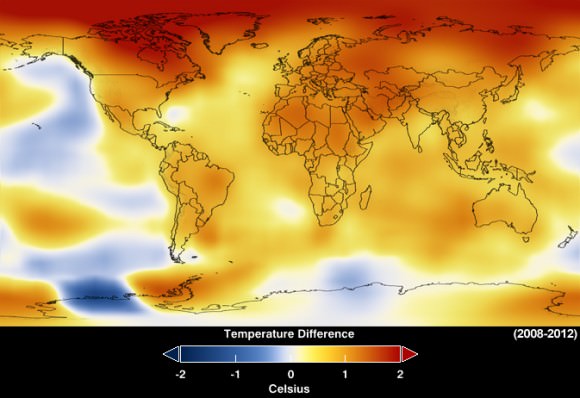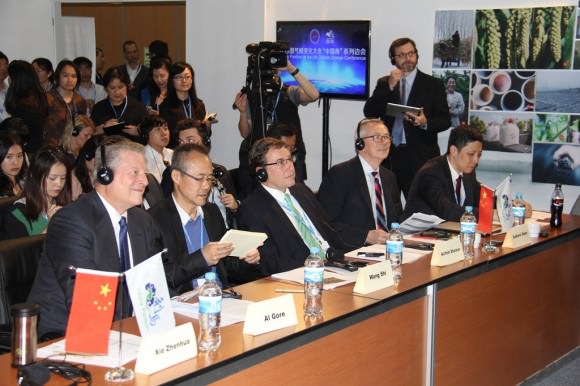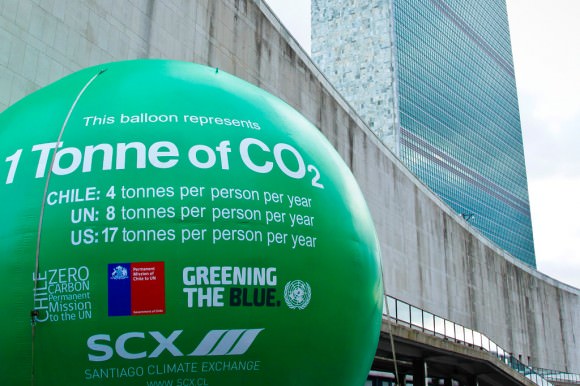Earlier this month, delegates from the various states that make up the UN met in Lima, Peru, to agree on a framework for the Climate Change Conference that is scheduled to take place in Paris next year. For over two weeks, representatives debated and discussed the issue, which at times became hotly contested and divisive.
In the end, a compromise was reached between rich and developing nations, which found themselves on opposite sides for much of the proceedings.
And while few member states walked away feeling they had received all they wanted, many expressed that the meeting was an important step on the road to the 2015 Climate Change Conference. It is hoped that this conference will, after 20 years of negotiations, create the first binding and universal agreement on climate change.
The 2015 Paris Conference will be the 21st session of the Conference of the Parties who signed the 1992 United Nations Framework Convention on Climate Change (UNFCCC) and the 11th session of the Meeting of the Parties who drafted the 1997 Kyoto Protocol.
The objective of the conference is to achieve a legally binding and universal agreement on Climate Change specifically aimed at curbing greenhouse gas emissions to limit global temperature increases to an average of 2 degrees Celsius above pre-industrial levels.

This temperature increase is being driven by increased carbon emissions that have been building steadily since the late 18th century and rapidly in the 20th. According to NASA, CO² concentrations have not exceeded 300 ppm in the upper atmosphere for over 400,000 years, which accounts for the whole of human history.
However, in May of last year, the National Oceanic and Atmospheric Administration (NOAA) announced that these concentrations had reached 400 ppm, based on ongoing observations from the Mauna Loa Observatory in Hawaii.
Meanwhile, research conducted by the U.S. Global Change Research Program indicates that by the year 2100, carbon dioxide emissions could either level off at about 550 ppm or rise to as high as 800. This could mean the difference between a temperature increase of 2.5 °C, which is sustainable, and an increase of 4.5 °C (4.5 – 8 °F), which would make life untenable for many regions of the planet.
Hence the importance of reaching, for the first time in over 20 years of UN negotiations, a binding and universal agreement on the climate that will involve all the nations of the world. And with the conclusion of the Lima Conference, the delegates have what they believe will be a sufficient framework for achieving that next year.
While many environmental groups see the framework as an ineffectual compromise, it was hailed by members of the EU as a step towards the long-awaited global climate deal that began in 1992.
“The decisions adopted in Lima pave the way for the adoption of a universal and meaningful agreement in 2015,” said UN Secretary-General Ban Ki-moon in a statement issued at the conclusion of the two-week meeting. In addition, Peru’s environment minister – Manuel Pulgar-Vidal, who chaired the summit – was quoted by the BBC as saying: “As a text it’s not perfect, but it includes the positions of the parties.”

Amongst the criticisms leveled by environmental groups is the fact that many important decisions were postponed, and that the draft agreement contained watered-down language.
For instance, on national pledges, it says that countries “may” include quantifiable information showing how they intend to meet their emissions targets, rather than “shall”. By making this optional, environmentalists believe that signatories will be entering into an agreement that is not binding and therefore has no teeth.
However, on the plus side, the agreement kept the 194 members together and on track for next year. Concerns over responsibilities between developed and developing nations were alleviated by changing the language in the agreement, stating that countries have “common but differentiated responsibilities”.
Other meaningful agreements were reached as well, which included boosted commitments to a Green Climate Fund (GCF), financial aid for “vulnerable nations”, new targets to be set for carbon emission reductions, a new process of Multilateral Assessment to achieve new levels of transparency for carbon-cutting initiatives, and new calls to raise awareness by putting climate change into school curricula.
In addition, the Lima Conference also led to the creation of The 1 Gigaton Coalition, a UN-coordinated group dedicated to promoting renewable energy. As stated by the UNEP, this group was created “to boost efforts to save billions of dollars and billions of tonnes of CO² emissions each year by measuring and reporting reductions of greenhouse gas emissions resulting from projects and programs that promote renewable energy and energy efficiency in developing countries.”

Coordinated by the United Nations Environment Programme (UNEP) with the support of the Government of Norway, they will be responsible for measuring CO² reductions through the application of renewable energy projects. The coalition was formed in light of the fact that while many nations have such initiatives in place, they are not measuring or reporting the drop in greenhouse gases that result.
They believe that, if accurately measured, these drops in emissions would equal 1 Gigaton by the year 2020. This would not only be beneficial to the environment, but would result in a reduced financial burden for governments all across the world.
As UNEP Executive Director Achim Steiner stated in a press release: “Our global economy could be $18 trillion better off by 2035 if we adopted energy efficiency as a first choice, while various estimates put the potential from energy efficient improvements anywhere between 2.5 and 6.8 gigatons of carbon per year by 2030.”
Ultimately, the 1 Gigaton Coalition hopes to provide the information that demonstrates unequivocally that energy efficiency and renewables are helping to close the gap between current emissions levels and what they will need to come down to if we hope to meet a temperature increase of just 2 °C. This, as already stated, could mean the difference between life and death for many people, and ultimately for the environment as a whole.
The location of UNFCCC talks are rotated by regions throughout United Nations countries. The 2015 conference will be held at Le Bourget from 30 November to 11 December 2015.

